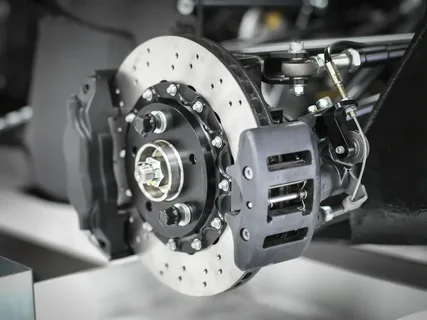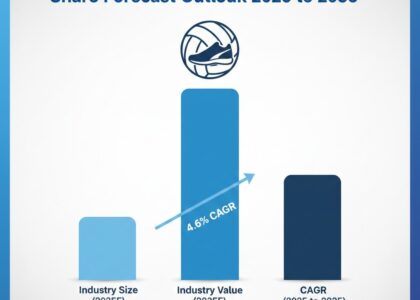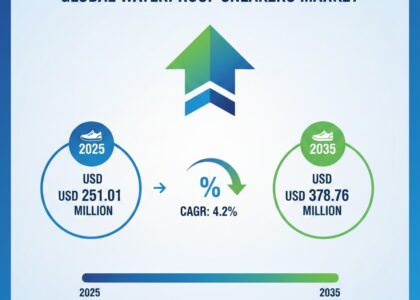The Automotive Brake System & Components Market is projected to experience steady growth over the next decade, driven by increasing vehicle production, advancements in braking technology, and stringent safety regulations. The market is expected to grow from USD 74,346.8 million in 2025 to USD 104,873.5 million by 2035, registering a CAGR of 3.5% during the forecast period. Rising consumer demand for enhanced vehicle safety, along with the integration of advanced driver-assistance systems (ADAS), is expected to further boost market expansion.
In a world where vehicles are becoming faster, smarter, and increasingly autonomous, the ability to move is no longer the only measure of performance—knowing how and when to stop is equally critical. At the heart of every safe journey lies a network of unsung mechanical and electronic heroes: the automotive brake system and its components.
From sudden emergency stops to smooth deceleration at a traffic light, brake systems enable control, confidence, and protection. Though they operate largely out of sight, they play a visible role in defining safety, driving experience, and regulatory compliance across the entire automotive industry.
Get Ahead with Our Report: Request Your Sample Now!
https://www.futuremarketinsights.com/reports/sample/rep-gb-4009
More Than Stopping: Enabling Smart, Safe Mobility
A brake system does more than halt motion. In modern vehicles, it’s a sophisticated orchestration of sensors, hydraulic components, friction materials, and control units that ensure precision stopping power in all conditions. Whether through disc or drum, ABS or EBD, today’s braking solutions are engineered for more than force—they are tuned for intelligence.
With the integration of advanced driver assistance systems (ADAS), the role of the brake system has expanded. Emergency braking, hill hold, traction control, and regenerative braking in EVs are all dependent on coordinated, real-time communication between the brake system and the vehicle’s electronic brain.
Quietly Integral to the Future of Driving
While innovations in electrification and automation capture headlines, brake systems continue to evolve behind the scenes. Without reliable braking, adaptive cruise control, lane keeping, and self-parking technologies cannot function safely. Brake systems are the safety net upon which all modern mobility innovations depend.
In fact, as vehicles shift from manual to autonomous control, braking systems are increasingly required to operate independently of human input—making reliability, redundancy, and predictive response more important than ever.
Engineered for Performance Under Pressure
Brake components must withstand extremes: high temperatures, rapid pressure changes, exposure to road contaminants, and wear from repeated use. From rotors and calipers to master cylinders and brake pads, each element is designed for durability and consistent performance across thousands of braking events.
Manufacturers are pushing the envelope with new materials—ceramic composites, advanced polymers, and low-copper formulations—to meet both performance expectations and environmental standards. Meanwhile, brake-by-wire technologies are reducing mechanical complexity while enhancing control accuracy and vehicle integration.
Complexity Meets Customization
With vehicle platforms becoming more diversified—from electric SUVs to ultra-light city cars—the demands on brake system design have grown. Engineers must balance weight reduction with braking power, tailor brake response to different drivetrain configurations, and ensure compatibility with onboard diagnostics and telematics.
In electric vehicles, for example, friction brakes must coexist with regenerative braking systems—requiring seamless transitions and precise modulation. In performance vehicles, the demand is for high fade resistance and responsiveness. These differing priorities make brake systems a canvas for both standardization and customization.
Exhaustive Market Report: A Complete Study
https://www.futuremarketinsights.com/reports/automotive-brake-system-and-components-market
An Ally in the Race to Sustainability
Sustainability in braking goes beyond emissions—it touches on particulate matter, material recyclability, and noise pollution. With tightening environmental regulations and urban emission zones, brake manufacturers are innovating low-dust, copper-free, and longer-lasting materials to reduce ecological impact.
Regenerative braking, in particular, plays a pivotal role in electric mobility—converting kinetic energy back into electrical energy, improving range, and reducing brake pad wear. These advances turn the act of stopping into an opportunity for efficiency and environmental benefit.
Invisible, but Indispensable
You won’t find brake systems featured in glossy car commercials or consumer gadgets—but their presence is felt every time a vehicle responds to danger, adapts to terrain, or smoothly glides to a halt. They’re not just mechanisms—they’re mission-critical systems woven into the very fabric of vehicle safety.
As the automotive landscape moves toward autonomy, electrification, and smarter infrastructure, brake systems and components will remain foundational. Always improving, always adapting, and always ready—brakes don’t just stop motion; they safeguard progress, one calculated stop at a time.






